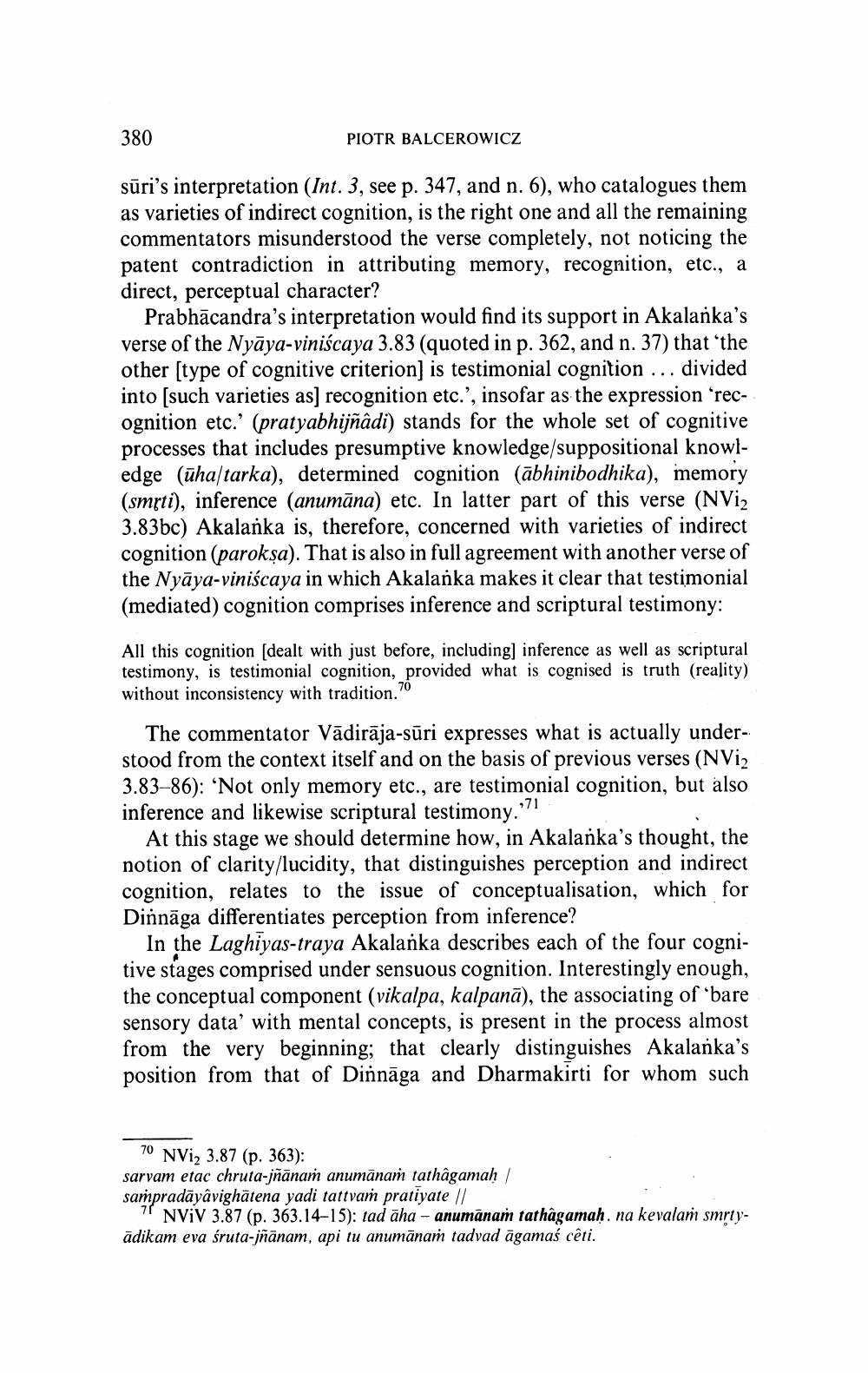________________
380
suri's interpretation (Int. 3, see p. 347, and n. 6), who catalogues them as varieties of indirect cognition, is the right one and all the remaining commentators misunderstood the verse completely, not noticing the patent contradiction in attributing memory, recognition, etc., a direct, perceptual character?
PIOTR BALCEROWICZ
Prabhācandra's interpretation would find its support in Akalanka's verse of the Nyāya-viniścaya 3.83 (quoted in p. 362, and n. 37) that 'the other [type of cognitive criterion] is testimonial cognition ... divided into [such varieties as] recognition etc.', insofar as the expression 'recognition etc.' (pratyabhijñâdi) stands for the whole set of cognitive processes that includes presumptive knowledge/suppositional knowledge (uha/tarka), determined cognition (abhinibodhika), memory (smrti), inference (anumāna) etc. In latter part of this verse (NVi2 3.83bc) Akalanka is, therefore, concerned with varieties of indirect cognition (parokṣa). That is also in full agreement with another verse of the Nyaya-viniscaya in which Akalanka makes it clear that testimonial (mediated) cognition comprises inference and scriptural testimony:
All this cognition [dealt with just before, including] inference as well as scriptural testimony, is testimonial cognition, provided what is cognised is truth (reality) without inconsistency with tradition."
70
The commentator Vādirāja-sūri expresses what is actually understood from the context itself and on the basis of previous verses (NVi2 3.83-86): 'Not only memory etc., are testimonial cognition, but also inference and likewise scriptural testimony.'
,71
At this stage we should determine how, in Akalanka's thought, the notion of clarity/lucidity, that distinguishes perception and indirect cognition, relates to the issue of conceptualisation, which for Dinnaga differentiates perception from inference?
In the Laghiyas-traya Akalanka describes each of the four cognitive stages comprised under sensuous cognition. Interestingly enough, the conceptual component (vikalpa, kalpana), the associating of 'bare sensory data' with mental concepts, is present in the process almost from the very beginning; that clearly distinguishes Akalanka's position from that of Dinnaga and Dharmakirti for whom such
70 NVi2 3.87 (p. 363):
sarvam etac chruta-jñānam anumanam tathagamaḥ | sampradayâvighatena yadi tattvam pratiyate ||
7 NVIV 3.87 (p. 363.14-15): tad aha - anumanam tathagamaḥ, na kevalaṁ smrtyādikam eva śruta-jñānam, api tu anumānaṁ tadvad āgamaś cêti.




